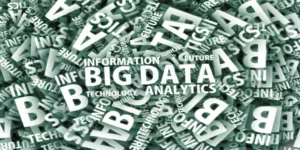Big Data is constantly changing at the moment and that attracts new trends regarding analytics. 2019 will be the year of technological advancements in terms of managing data, so people should stay up to date with whatever is new about this topic. This article will cover the trends that are supposed to flourish during the following year. See here what will change:
Market tools and visualization
If people didn’t pay much attention to data visualization tools before, 2019 is the year when they will be in the center of attention. Considering the large amounts of data that must be handled at the moment, it is absolutely paramount to invest in tools that are able to handle data properly and help users understand it easier and faster. Of course, it will take a bit of practice to start using these tools at their maximum potential, but once you do, managing data is going to be more efficient than ever. Most of these tools generate charts, animations and all sorts of other formats that will help users sort and compare information from different data criteria.
Rich content requires powerful analytics
As the content becomes more and denser, it is obvious that the tools for analyzing this content should be upgraded. The insights that users can receive from complex analytics programs are definitely worth the wait. Content Intelligence, a term that will be frequently used in 2019, covers all the tools that analyze the content stored online. Most content analytics software programs integrate digital analytics or social analytics software, which transforms them into the best tools for establishing future strategies and keep track of all the metrics they are interested in. Since the digital world is on the rise, metrics such as page views, click-through rate, search rankings and screen time can be of great help for people who work with them.
Everything goes into the cloud

Cloud computing seems to be the future of society, even though the changes might not happen integrally in 2019. Telecom professionals already discussed the potential uses of cloud computing in 2019. Among the discussion were also included 5G technologies and the use of AI in telecommunications. Cloud computing is the focal point of the discussion, as it will disrupt most industries out there. The society will cope easier with the growing volumes of data by using cloud computing. Many tasks related to tech will happen exclusively in the cloud, which may seem scary at this moment in terms of security. In 2019, the cloud will lose its mystery and will become mainstream for people – a simple service like water or electricity.
Machine learning is accelerated visibly

People should get used to the fact that human intervention will be reduced tremendously in the future. This means that some of the tasks that you are used to dealing with on your own will become fully automated, and that is possible by using a branch of artificial intelligence, which is called machine learning. Machine learning represents a data analysis method that is based on an analytical model. Machine learning will be deeply related to Big Data, as it is going to be able to prepare data as needed by humans, to come up with basic and advanced algorithms, to transform processes in iterative ones and so on.
Cognitive Computing devices

Cognitive Computing, also known as CC, represents a relatively new concept in terms of analyzing data. Basically, CC is used to imitate the functioning of the brain, which means it can be used to make better decisions, free of human errors. Cognitive applications can handle both structured and unstructured data, which is a big deal considering the latest trends in terms of Big Data. Unstructured data can be pretty difficult to handle, but with the emerging of new solutions such as CC, this is a problem of the past. In fact, CC should receive as much data as possible in order to learn more things and become more accurate in decision making and analytics.
Predictive analysis as a tool
Big Data tools represent the focal point of this discussion, as people need to find new ways to analyze data in 2019. Business Intelligence is getting bigger and bigger every day, so people should stay up to date with the upgrades in this field. Predictive analytics software is set to grow to 9 billion by 2020, which means that you should be prepared for a considerable boost in this field. Even though it might be complicated to understand how things go in this field, this forecast should be treated seriously as it is definitely defining the current market. Predictive analysis is meant to gather data such as website usage, customer profiles, and other actionable databases and build segments or predictive models that will help any business become more profitable and more organized.
Deep learning – analyzing personal habits
While people still consider deep learning in its childhood, by 2020 the concept will become fully mature. The growth in dataset size asks for a better way to handle it, so that’s where deep learning steps in. A few years ago, neural networks were not capable of many things. Distinguishing different elements in images was perceived as innovative at the time, but today, deep learning can even identify potentially malignant cells in medical imaging. It completely disrupted society, and people should make good use of it.
The concept of augmented humanity
At the moment, people are used with the term augmented reality or mixed reality, which were deviations from virtual reality. In 2019-2020, be prepared to welcome another concept into the scheme – augmented humanity. Isobar trends presented augmented humanity as the new big trend in technology. This concept involves bringing personalization and customization in all services present on the market, thus creating a type of technology that’s closer to human empathy more than ever. The union of humanity and technology will become normal in a few years from now on, and the created outputs might be truly shocking for people who are not tech savvy.








